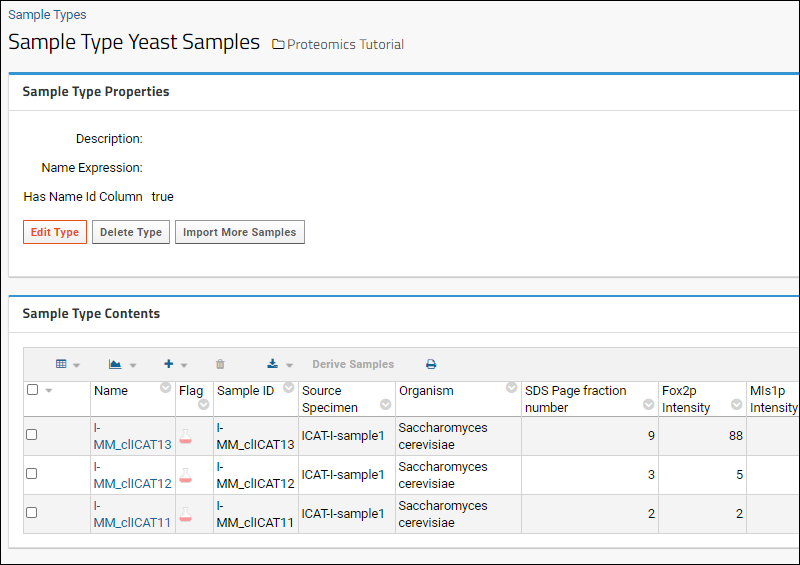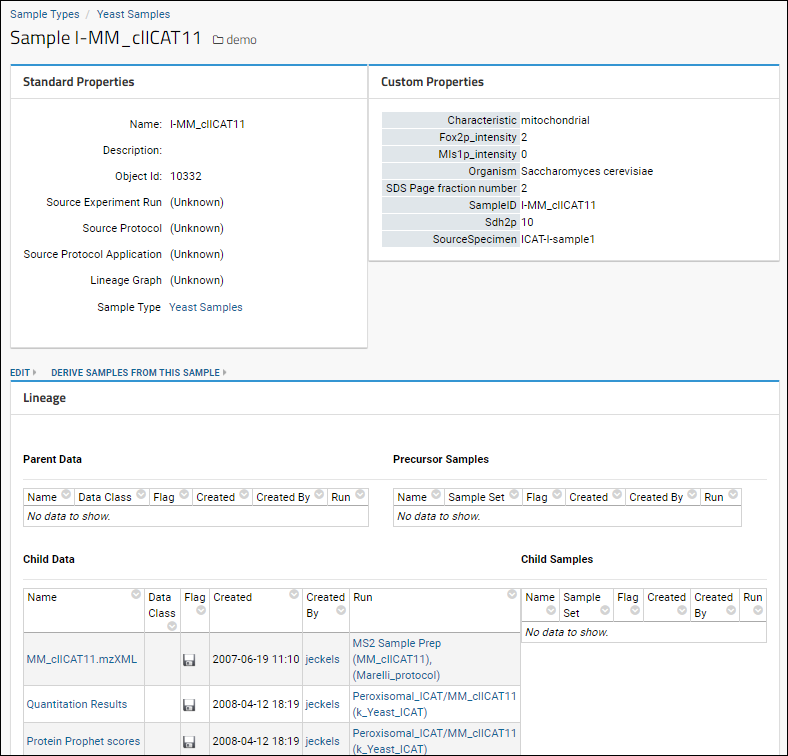Once you have a folder containing one or more sample types, you can view and manage them at several levels. This topic describes what you will find at each level.
View All Sample Types
You can
add the
Sample Types web part to any folder that has the
Experiment module enabled. This web part lists all of the sample types available in the current folder.

- Note the "Sample Count" field, which is a reserved, calculated column that shows the number of samples currently in a given sample type.
- Click links for:
View an Individual Sample Type
Clicking on the name of any sample type brings you to the individual view of its properties, lineage, and data.

Options on this page:
- Edit Type: Add or modify the properties and metadata fields associated with this sample type. See Create Sample Type.
- Delete Type: Delete the sample type. You will be asked to confirm the deletion.
- Import More Samples: See Add Samples.
You can also hover over any row to reveal
(edit) and (details) icons.
Delete Samples
To delete one or more samples, check the box for each of the desired row(s) and click the
(Delete) icon. You will be asked to confirm the deletion and reminded that
deletion cannot be undone.

Deletion Protection
It's important to note that samples
cannot be deleted if they have derived sample or assay data dependencies, if they have a status that prevents deletion, or if they are referenced in workflow jobs or electronic lab notebooks.
- If all rows selected for deletion have dependencies, the deletion will be denied.

- If some rows have dependencies, a popup will explain that only the subset without dependencies can be deleted and you will have to confirm if you still want to delete them.

View an Individual Sample
Clicking on the name of any sample in the sample type brings you to a detailed view of the sample.

The
Sample Type Contents page shows you:
- Standard properties. These are properties defined for a group of samples at the sample-type level.
- Custom properties. These are properties of this individual sample.
- Lineage. This section details the Parent Data, Precursor Samples, Child Data, and Child Samples.
- Runs using this material or derived material. All listed runs use this sample as an input.
It also provides links to:
Edit Sample Details
Edit a sample either by clicking the
in the sample grid, or by clicking
Edit on the details page. You can update the properties including the sample
Name, however keep in mind that sample names must remain unique.
Related Topics